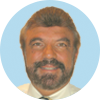In 1973, on my first official trip to China (Hong Kong, Taiwan), I was fortunate to attend lectures in acupuncture at the Tai Chung Medical College in Taipei. While there, an illustration caught my eye, the original of which (created 3,500 years earlier) was an etching on the breast plate of a tortoise shell.
My professors in China confirmed my observation and elaborated on the important role of the atlas (C1) vertebra, especially as it relates to acupuncture. This was extremely exciting; suddenly I was aware of a parallel to chiropractic I had not expected to find when I visited to study acupuncture.
In 1924, B.J. Palmer is credited with developing a specific technique known as "Hole in One" (HIO), which has since been used by thousands of DCs. It is a procedure whereby only the occiput and top two vertebrae (C1 atlas, C2 axis) of the cervical spine are adjusted. No other vertebrae are adjusted or stimulated. HIO is still used to this day by many within the profession, even though the profession at large has developed a variety of techniques and procedures over the decades which are seemingly more popular overall.
There have been several different internationally accepted procedures based on the adjustment of the atlas vertebra, most notably the Grostic technique (also referred to as orthospinology), which was widely practiced throughout the U.S. in the 1930s and '40s, and is still practiced to this day. B.J. specifically stated that the primary causative vertebrae to subluxate (move from normal position) can only exist at the occiput, C1 and C2; he was a strong advocate of HIO until his death in 1961. Even though my personal chiropractic background has been as a full-spine practitioner, I also have placed great emphasis upon the articulation of the atlas and axis vertebrae.
When one looks at the tsang (zang) fu organs, one will see the magnificence of the atlas/axis area. Every organ associated with the meridians, namely the lung, large intestine, stomach, spleen, heart, small intestine, kidney, pericardium, triple heater (endocrine system), gallbladder and liver, all have a direct or indirect neurological connection to the C1 (atlas) vertebra, with the exception of the bladder. However, one of the most significant points on the human body, BL 10, is located directly over the atlas vertebra and is where the bladder meridian splits to form two distinct channels paravertebral down the spine to include the famous shu points. Therefore, all organ systems associated with the meridians are intimately related to the atlas vertebra (including the bladder) due to this neurological connection.
Given that the foramen magnum, the opening at the base of the skull that allows the spinal cord to flow from the brain, can become partially occluded due to subluxation of the atlas vertebra (which protects this area), this area is paramount for nerve flow through the body and any disruption can and does cause extreme symptomatology and condition response. In my experience, this is true for any neurological, visceral or musculoskeletal condition.
Four years of chiropractic college gave me a stellar education regarding the neurophysiology of the body and in particular the role of the spinal vertebral segments and their role in the expression of neurological impulse to the entire body; however, it was my early study of acupuncture that really put it all together for me. Not only did I understand more fully the role of the huo tuo jiaji points (1/2 inch bilateral to the Governing Vessel, Du Mo) as they relate to the sympathetic nervous system, but in particular the vital role of the atlas/axis articulation as described by Palmer and others.
To this day, when my back is against the wall and I am seeing extremely difficult cases for which modern medicine and other approaches have failed, I utilize an approach to healing I learned nearly 40 years ago and that seldom fails in its clinical response: stimulating specific points in and around the atlas/axis/occiput. The points I stimulate are GB 20 (just under the occiput, halfway between the tip of the ear and the external occipital protuberance, which is connected to GV [DU 16]); BL 10, halfway between GV 16 and GB 20; and TH 16, at the extreme lateral transverse process of the C2 vertebra.
I always add ST 7 on the mandible due to its inner connection to the atlas, in addition to KI 27, which will likewise have a related effect. GV 15 (just below the axis), in addition to GV 14 (just below the C7 vertebra) will elicit one of the most powerful effects you will ever see in acupuncture.
The acupoint protocol thus includes GB 20, BL 10, GV 16, TH 16, GV 15, GV 14, ST 7 and KI 27. Begin adding this protocol into your practice, in addition to general stimulation of the huo tuo jiaji points, and you will be stimulating the most dynamic combination of points you will ever use in clinical practice for a variety of conditions.
Click here for previous articles by John Amaro, LAc, DC, Dipl. Ac.(NCCAOM), Dipl.Med.Ac.(IAMA).





